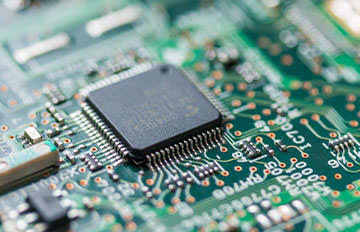What is a Semiconductor and How Does it Work?
A semiconductor refers to any material with properties that fall between those of conductors and insulators, and which can be used in the production of electronic devices. Semiconductors exist as both natural and synthetic materials, the latter of which may be created by doping pure semiconductors with other elements or compounds to create desirable new properties. Semiconductors play an essential role in everyday life, from modern electronics like cell phones to solar cells and even medical devices used to treat conditions like heart disease. Learn about what semiconductors are and how they work below!
What Is Semiconductor Material
A semiconductor material is a material that can connect and conduct electricity and heat. They are made of materials like carbon, silicon, germanium, and silicon-germanium, and are found in computer chips, solar energy cells and LED lights. When it comes to how they work, semiconductors have three main properties: resistance, conductivity, and Bandgap.
N-type and P-type Semiconductors
N-type semiconductors are made of materials with 5 valence electrons, such as phosphorus, while P-type semiconductors are made of materials with 3 valence electrons, such as boron. When these two types of materials are combined, they create a junction. The junction acts as a barrier for the flow of electrons. However, when a voltage is applied to the junction, it creates an electric field that allows electrons to flow through the junction.
Working of Silicon Chips
A silicon chip is made up of a material called silicon. When this material is heated, it creates an electric field. This electric field helps to control the flow of electrons. The way that the silicon is cut, or doped, determines how well it will conduct electricity.
Use of Silicon Chips in Everyday Life
A semiconductor is a material that can connect and conduct electricity and heat. They are made of materials like carbon, silicon, germanium, and silicon-germanium, and are found in computer chips, solar energy cells and LED lights. When combined with other materials, they can create transistors, diodes, and integrated circuits that power our electronic devices.
Semiconductors are the foundation of the modern world. They are found in everything from your car’s engine control unit to the tiny microprocessors in your smartphone. In fact, they are so ubiquitous that it’s hard to imagine a world without them.
But how do semiconductors work?
Where can we find silicon chips today?
A silicon chip is found in many electronic devices today. They are used in computer processors, memory chips, and solar energy cells. They are also found in automotive electronics, microwave ovens, and medical devices. Silicon chips have even made their way into space exploration!


